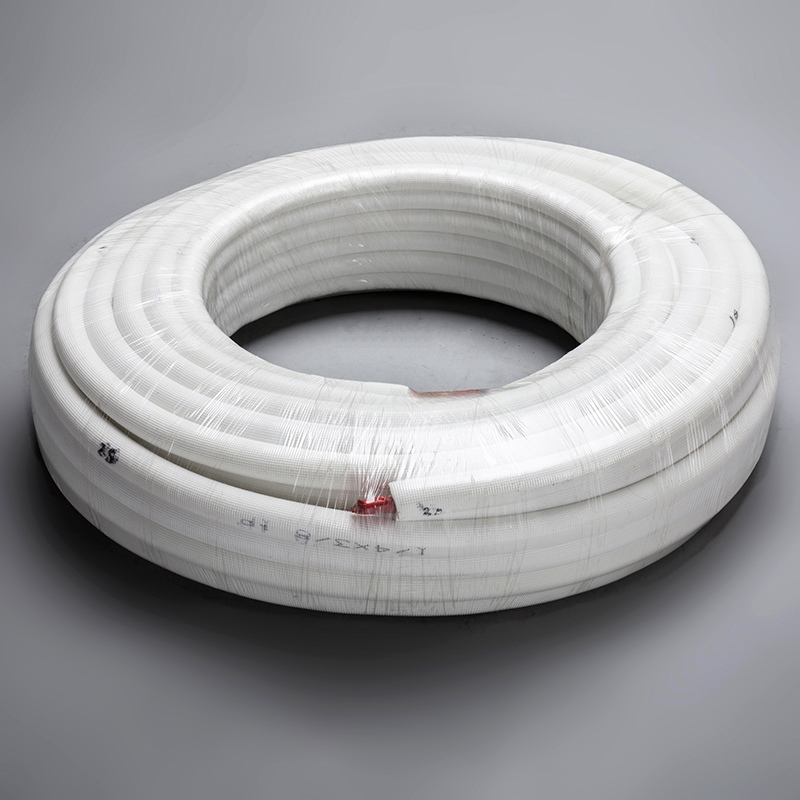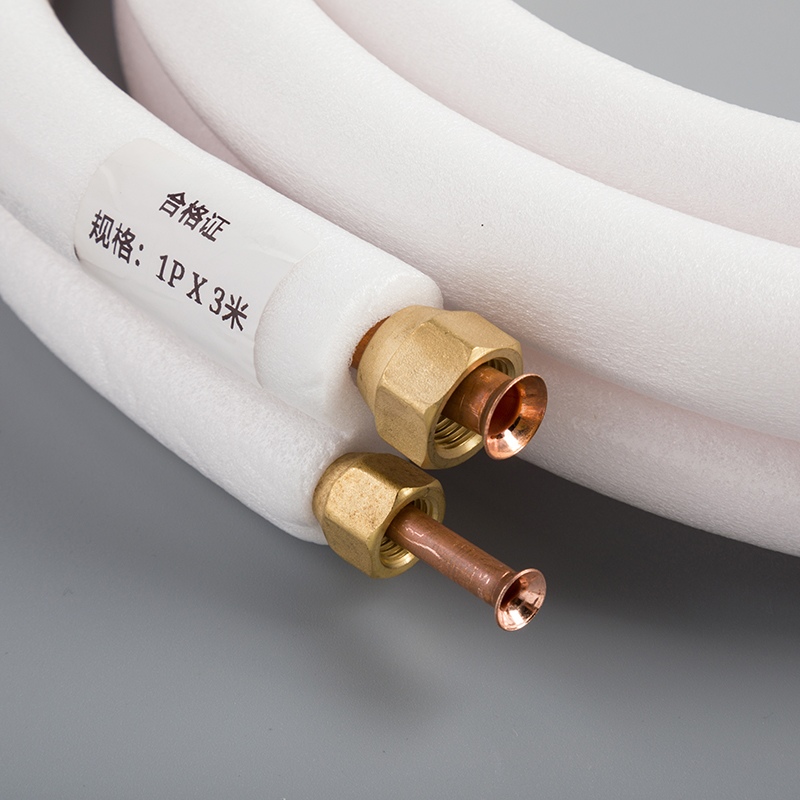How to Measure Copper Pipe Size Accurately

Accurate measurement of copper pipes, including how to measure copper pipe size, is crucial in plumbing projects. Precision ensures fittings and connectors align correctly, preventing leaks and blockages. Copper pipes find common use in air conditioning systems, water supply lines, and heating systems. Essential tools for measuring include digital calipers and measuring tape. Digital calipers offer precise measurements with resolutions as fine as 0.0005 inches. Measuring tape provides flexibility and ease of use, ensuring accurate dimensions every time.
Understanding Copper Pipe Sizes
Nominal Pipe Size (NPS) vs. Outside Diameter (OD)
Definition of NPS
Nominal Pipe Size (NPS) serves as a North American standard for pipe sizes. NPS identifies the diameter of the hole in the pipe with a non-dimensional number. This number specifies both the diameter and wall thickness of the pipe. NPS applies to pipes used for high or low pressures and temperatures.
Definition of OD
Outside Diameter (OD) measures the total width of the pipe, including its walls. The OD remains constant regardless of the wall thickness. This measurement helps determine the actual size of the pipe.
Differences between NPS and OD
NPS and OD differ significantly. NPS provides a standard size designation, while OD measures the actual physical size. NPS does not change with wall thickness, but OD does. Understanding these differences is crucial for accurate pipe measurement.
Types of Copper Pipes
Type K
Type K copper pipes have the thickest walls among the common types. These pipes are suitable for underground installations. The thick walls provide extra durability and resistance to pressure.
Type L
Type L copper pipes feature medium wall thickness. These pipes are commonly used in interior plumbing. Type L pipes offer a balance between strength and flexibility.
Type M
Type M copper pipes have the thinnest walls. These pipes are often used in residential water supply lines. The thinner walls make Type M pipes more affordable and easier to work with.
Tools Required for Measuring Copper Pipes

Measuring Tape
Features to Look For
A measuring tape must have clear, easy-to-read markings. Look for a tape with both metric and imperial units. A sturdy, retractable design ensures durability. The tape should also have a locking mechanism to hold measurements in place. A flexible tape can wrap around pipes easily.
How to Use It
To measure a copper pipe with a measuring tape, wrap the tape around the pipe's circumference. Mark the point where the tape meets itself. Measure the length from the start of the tape to the mark. Divide this length by pi (3.1416) to find the outside diameter (OD) of the pipe.
Caliper
Types of Calipers
Calipers come in various types, including digital, dial, and vernier calipers. Digital calipers provide precise measurements with a resolution as fine as 0.0005 inches. Dial calipers use a mechanical dial to display measurements. Vernier calipers have a sliding scale for manual readings.
How to Use a Caliper
To measure a copper pipe with a caliper, open the jaws of the caliper and place them around the pipe. Close the jaws until they touch the pipe's surface. Read the measurement displayed on the caliper. For digital calipers, the reading appears on a screen. For dial and vernier calipers, read the measurement from the scale.
Pipe Sizing Charts
How to Read a Pipe Sizing Chart
Pipe sizing charts list various pipe sizes and their corresponding dimensions. To use a chart, locate the measured outside diameter (OD) of the pipe. Find the OD on the chart. The chart will show the nominal pipe size (NPS) and other relevant dimensions.
Where to Find Reliable Charts
Reliable pipe sizing charts can be found in plumbing handbooks and online resources. Manufacturer websites, such as Baoyuan, offer accurate charts. These charts ensure users select the correct pipe size for their projects.
Step-by-Step Guide to Measuring Copper Pipe Size

Measuring the Outside Diameter (OD)
Steps to measure OD
Select a flexible measuring tape.
Wrap the tape around the pipe's circumference.
Mark the point where the tape meets itself.
Measure the length from the start of the tape to the mark.
Divide this length by pi (3.1416) to find the outside diameter (OD).
Common mistakes to avoid
Avoid using a rigid measuring tape. Ensure the tape wraps snugly around the pipe without any gaps. Double-check the measurement to prevent errors. Do not forget to divide by pi to get the correct OD.
Measuring the Wall Thickness
Tools for measuring wall thickness
Use a digital caliper for precise measurements. A micrometer can also measure wall thickness accurately.
Steps to measure wall thickness
Open the jaws of the caliper or micrometer.
Place the tool around the pipe's wall.
Close the jaws until they touch both sides of the wall.
Read the measurement displayed on the tool.
Calculating the Nominal Pipe Size (NPS)
Formula for NPS calculation
Use the formula: NPS = (OD - 2 * Wall Thickness). This formula helps determine the nominal pipe size.
Examples of NPS calculation
For example, if the OD measures 1.125 inches and the wall thickness measures 0.065 inches, calculate the NPS as follows:
Multiply the wall thickness by 2: 0.065 * 2 = 0.13.
Subtract this value from the OD: 1.125 - 0.13 = 0.995.
Round to the nearest standard size, which is 1 inch NPS.
Learning how to measure copper pipe size accurately ensures proper fittings and connections. Accurate measurements prevent leaks and other issues in plumbing systems.
Tips for Ensuring Accurate Measurements
Double-checking measurements
Importance of verification
Verification ensures the accuracy of copper pipe measurements. Accurate measurements prevent issues like leaks and misalignments. Precision in measuring copper pipes guarantees proper fittings and connections.
Methods for double-checking
Use multiple tools to verify measurements. Measure the outside diameter (OD) with both a measuring tape and a caliper. Compare the results to ensure consistency. Repeat the measurement process to confirm accuracy. Cross-reference measurements with reliable pipe sizing charts.
Maintaining Measuring Tools
Cleaning and storage tips
Proper maintenance of measuring tools extends their lifespan. Clean tools after each use to remove debris and moisture. Store tools in a dry, secure location to prevent damage. Use protective cases for digital calipers to avoid scratches and impacts.
Calibration of tools
Regular calibration of measuring tools maintains their accuracy. Follow the manufacturer's guidelines for calibration intervals. Use calibration blocks or standards to check tool accuracy. Adjust tools as needed to ensure precise measurements.
Accurate measurement of copper pipes ensures proper fittings and connections. Understanding the differences between Nominal Pipe Size (NPS) and Outside Diameter (OD) is essential. Using the right tools, such as measuring tape and calipers, guarantees precise measurements. Regular practice and verification of measurements prevent leaks and failures. Maintaining and calibrating tools extends their lifespan and accuracy. Accurate measurements stand as the cornerstone of successful plumbing projects. Practicing these skills will refine accuracy and efficiency in every project.
See Also
Mastering Copper Pipe Sizing: The Ultimate How-To Guide
Simple Steps: Mastering Copper Pipe Measurement
Quick Tips: Measuring Copper Pipes for DIY Projects


